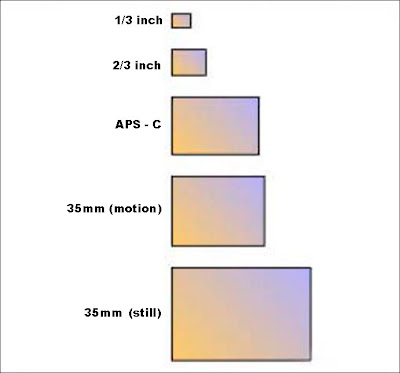That was just 20 months ago and since then, much to Canon's surprise, indie film makers and even pros have pushed aside their technically superior, properly-designed HD camcorders for this imperfect, deeply flawed tool : a DSLR that happens to shoot great video. They were buying the camera not for it's stills capability but for the video.
Why all the excitement about this camera? It's mostly all about size…the size of the sensor. Bigger is better when it comes to sensors and the 36mm X 24mm CMOS sensor of the 5D makes all the difference in the world. Most HD camcorders record with tiny 1/3 or 2/3 inch chips. Even those costing tens of thousands of dollars. Chips that small means a lack of dynamic range, poor low light capabilities and an inability to produce shallow depth of field.

Now let's look at the good and the bad. Looking at my list below, you'll see that the disadvantages out-number the advantages but don't let that discourage you. The advantages far out-weigh the frustrations of shooting video with these still cameras.
Advantages :
- Price
- Rich, filmic image quality, incredible dynamic range and low light capability
- Small size
- Wide range of lenses
- Looks like a still camera which can be an advantage in some shooting situations
- Oh yes…it takes great stills - even the frame grabs off the video look great
- Ergonomics not suited for video
- No auto focus while shooting
- Difficult to manually focus
- Poor audio : no balanced xlr, no visible audio meters, no headphone jack
- No auto zoom
- No image stabilization built into the body - need to rely on noisy lens stabilizers
- No built in ND filter
- Records only 12 minutes at a time
- Can produce rolling shutter and moire
- Overheating issues
- Highly-compressed codec
- No raw format
Next up, a look at how to make some of the above listed disadvantages a little more tolerable.


No comments:
Post a Comment